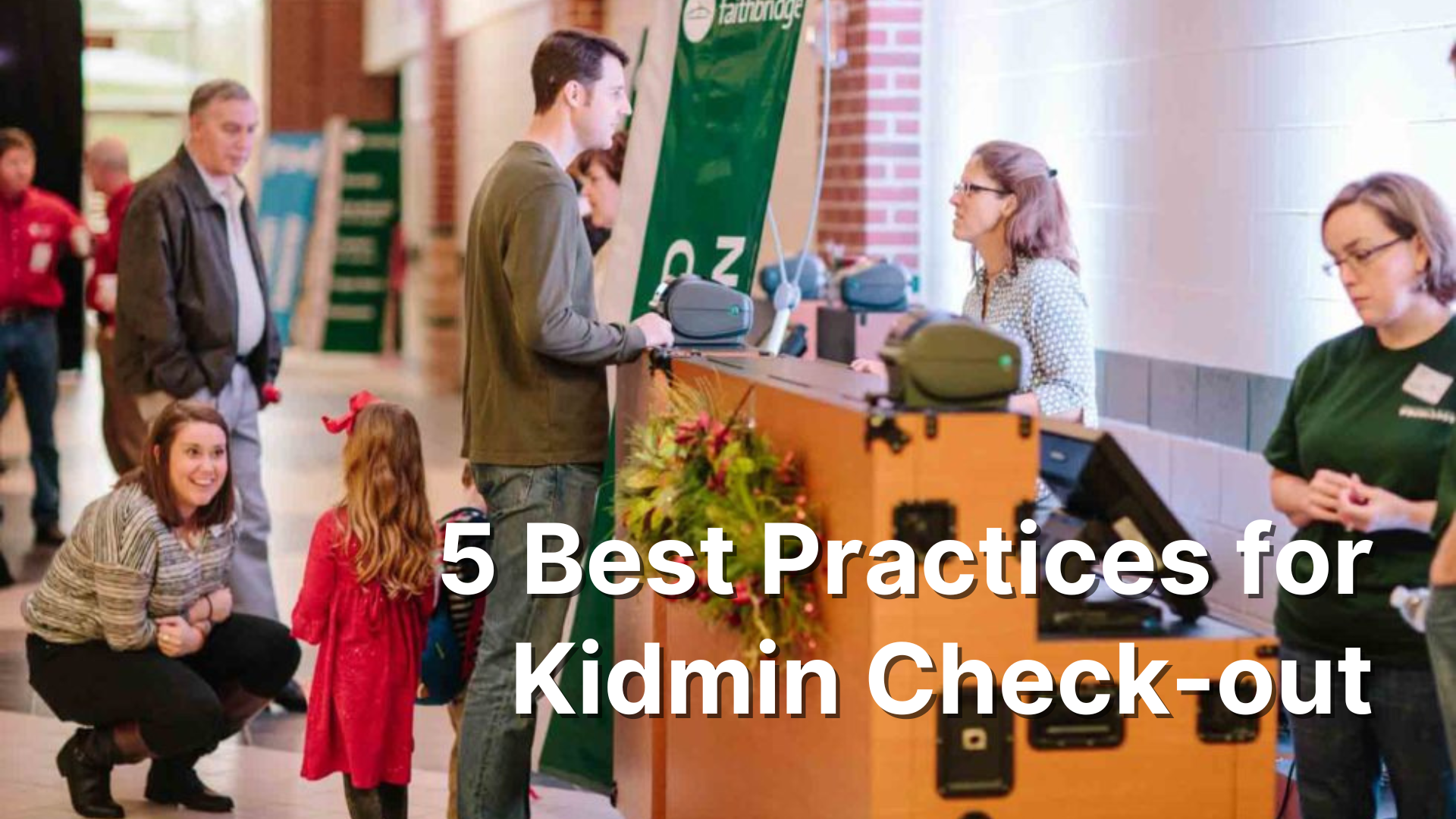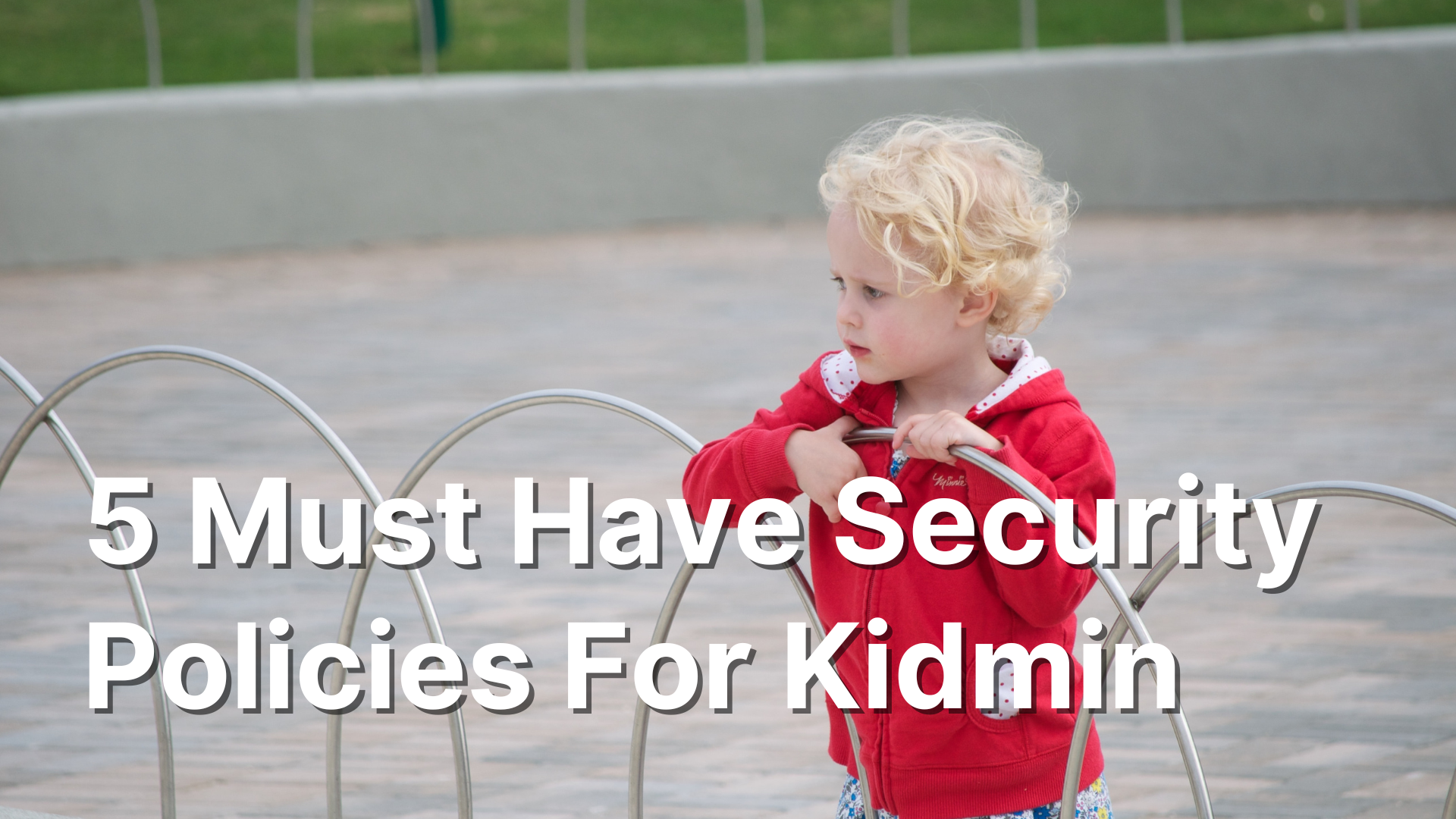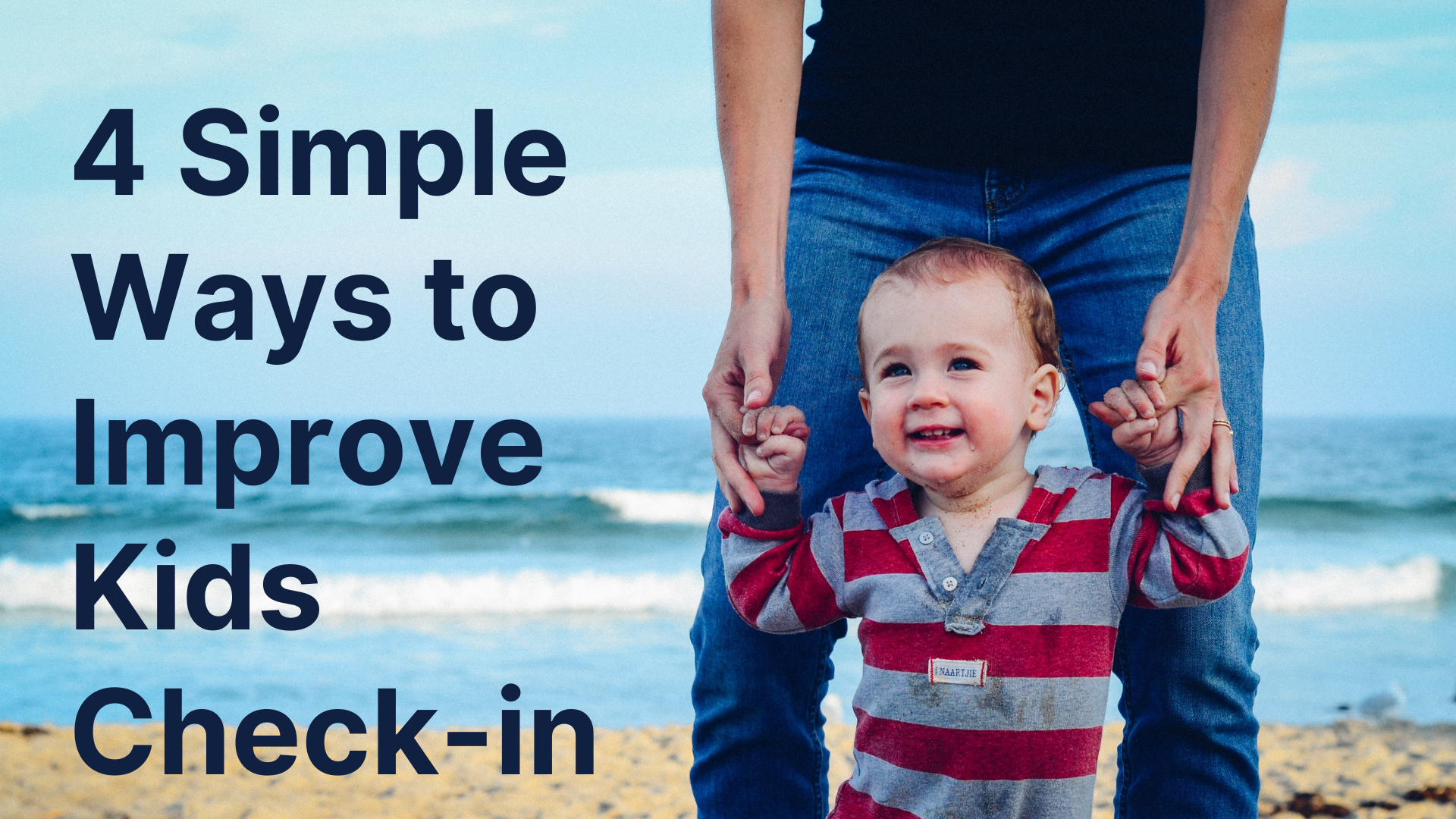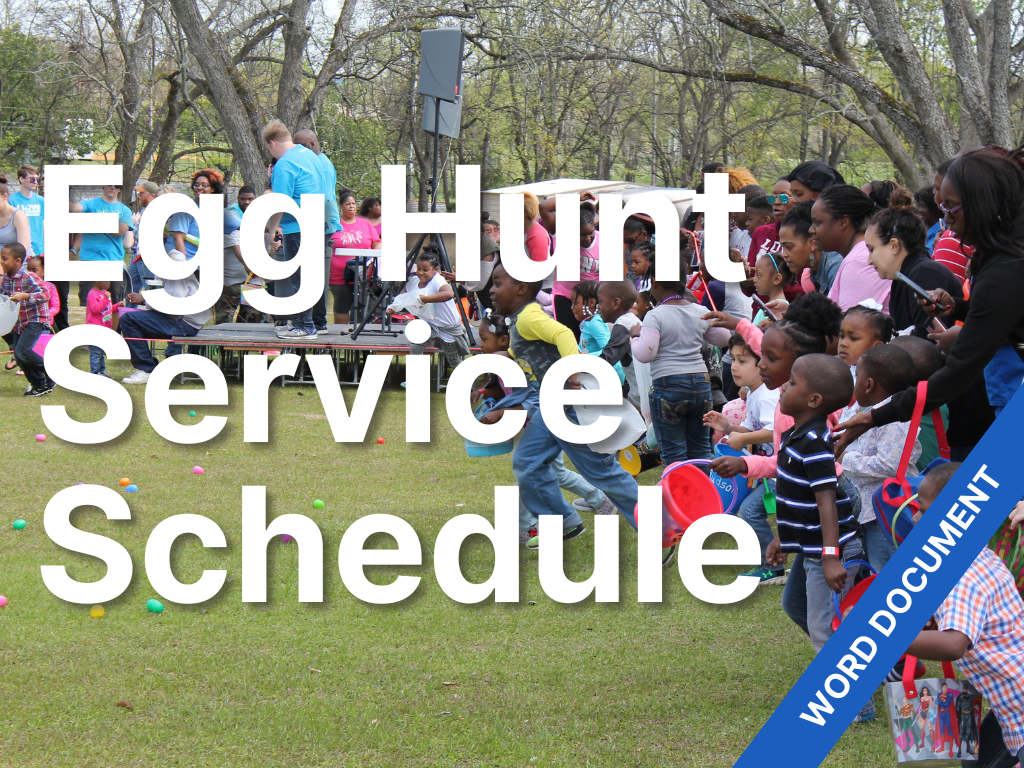5 Best Practices for Kidmin Check-out
Photo from Portable Church Industries
One of the biggest security problems for kidmin is dismissal. When I was a kid, church would let out and they just let us kids run wild and go find our parents. That kind of dismissal would give modern parents a heart attack. While it’s efficient, it’s not very safe. When talking about safety and security, this general rule applies. The safer the area the less efficient it is to enter and exit. Those bits of friction make it more difficult for bad actors to make a move.
Now, I’m not advocating that we lock down our kidmins like Fort Knox. For the most part, our churches are safe and friendly environments. People wanting to cause harm are few and far between. However, we need to project safety as much as possible. The projection quells any fears from concerned guests and parents. It’s why safety is one of the essential elements of a successful children’s ministry.
So, what can you do? We can’t let the kids run free on one side or run a paternity test every week on the other. That’s why I have 5 best practices for a safe, secure, and fast checkout that will leave your parents and, most importantly, guests happy.
1. Security Tag
A lot of digital check-in systems have a security tag feature. Basically, a unique number is printed on the kid’s name tag and then another tag is printed with the same number and given to the parents. This way when a parent or other responsible adult comes to pick up their kids, the tag is proof they are an authorized pick up.
Having the security tag solves a whole world of problems. If there are custody issues, you don’t have to worry about identifying them because they don’t have the tag.
No tag, no kid.
Also, sometimes older brothers and sisters want to pick up their siblings. One time I allowed this, and the older sister let their sibling run free throughout the church. When the parent came for pick up, we didn’t know where her child was. It was a mess. We worked through it. But from that point on, any pickup person had to be 15 or older and the security tag.
Sometimes the parent loses their tag for various reasons. In this case, I ask them to show an ID, and then verify that they are authorized in our Church Management System.
You’ll be tempted to release your kids to the parents you know, but I caution against this practice. While you know who they are, guests don’t. If they see you release kids without the tag, they might think the tags are a joke and their kids might be unsafe.
Again, no tag, no kid.
2. Limited Release
The way my kids pastor dismissed us when I was a kid is called open release. It’s basically saying bye! And hoping the kids get to the right place. I’ve seen a lot of small churches do this. But it doesn’t matter how small your ministry is, you need to control the release of your kids.
When the parent gives you their security tag, don’t let them enter the room or have free reign in your environment. Create a waiting area with stanchions or something else and ask the parents to wait there. Then call the kid using a microphone if your room is large enough or just your voice. Let the kid come to you and then release them to their parent.
Remember that unique number printed on their name tag? This is a good time to verify that the numbers match and you’re giving them the right kid. You don’t want to release Jessica P. when you meant to release Jessica D. I’ve done it. It didn’t go well. Learn from my mistakes.
Limited release looks a little different for preschool and nursery. Elementary parents don’t usually come into the room at all. But younger kids need more care and literal handholding. So, I let parents in. You can let them come to the door, (hopefully, it’s a Dutch door) or all the way in. But again, make sure their tag matches their kids. Don’t give them the wrong baby or the wrong stuff. I haven’t mixed up babies, but I have mixed up diaper bags. That also didn’t go well. Learn from my mistakes.
3. Holding Area
I briefly mentioned the holding area in point number 2, but I want to go deeper here. Part of the problem with limited release is the speed. Your kids and/or teachers may not hear the name called or just ignore it. Then you have a worried or annoyed parent waiting for a long time for their kid. On top of that, your queue is getting longer as all the parents are now waiting for this one child to exit the area.
Thus, the holding area. When you check a parent’s tag and call the child ask them to stand in another area near the exit away from the line. Here they can wait for their child to exit, while you continue calling other children.
Once the kid does exit, you or another volunteer can check the tag again or just make sure the kid goes to their parent. Kids will naturally gravitate to their parents. You don’t have to worry as much about them going with the wrong people. If you checked everyone’s tag before they entered the holding area, there is very little chance of something going wrong.
The holding area will greatly increase the speed and efficiency of your checkout process.
4. Separate entry for new kids
Many churches have more than one service, so it’s not unusual to be checking in and checking out kids at the same time. If your building is set up for it, I suggest having one entry and one exit. This keeps the crowds separated and a nice easy flow.
That said, I’ve only served in one church with that kind of set up. So, I’ve had to make do. In one church, I used stanchions to create an entry and exit out of the same door. At another, parents had to pass through the elementary kids area to get to the nursery. I used stanchions again to create a barrier from parents to kids. Kids could go in, but parents had to stay on the other side. This walkway also served as my holding area. The only parents with a security tag were allowed into the kids’ area.
5. Volunteers Stay in Place
I talked about this in my post about moving to two services, but I think it bears mention here. When dismissal begins for your kids that doesn’t mean it’s time to say goodbye to your volunteers as well. On the contrary, your volunteers need to stay until most if not all the kids have been dismissed.
There are times when a volunteer may need to leave early, but those should be rare. The expectation is that they stay until all their kids are gone. If you dismiss correctly and parents come quickly, dismissal shouldn’t last longer than 10-15 minutes. Many times, the dismissal time was prime relationship building time for my small group leaders and their kids. If your volunteers leaving as soon as possible, they’re missing that vital time.
Additionally, the more people you have watching what’s happening the less likely you’ll have a breach. Keep your small group leaders, crowd control, and check-in volunteers in place. It’ll make your life so much easier.
Having a safe and secure checkout process is essential for your kidmin. First impressions matter, but so do last impressions. If your guests have a great time all throughout the service, but then a terrible checkout experience, they’re likely to not return. Take some time to think through your checkout process and see how you can make it safe, fast, and efficient.









